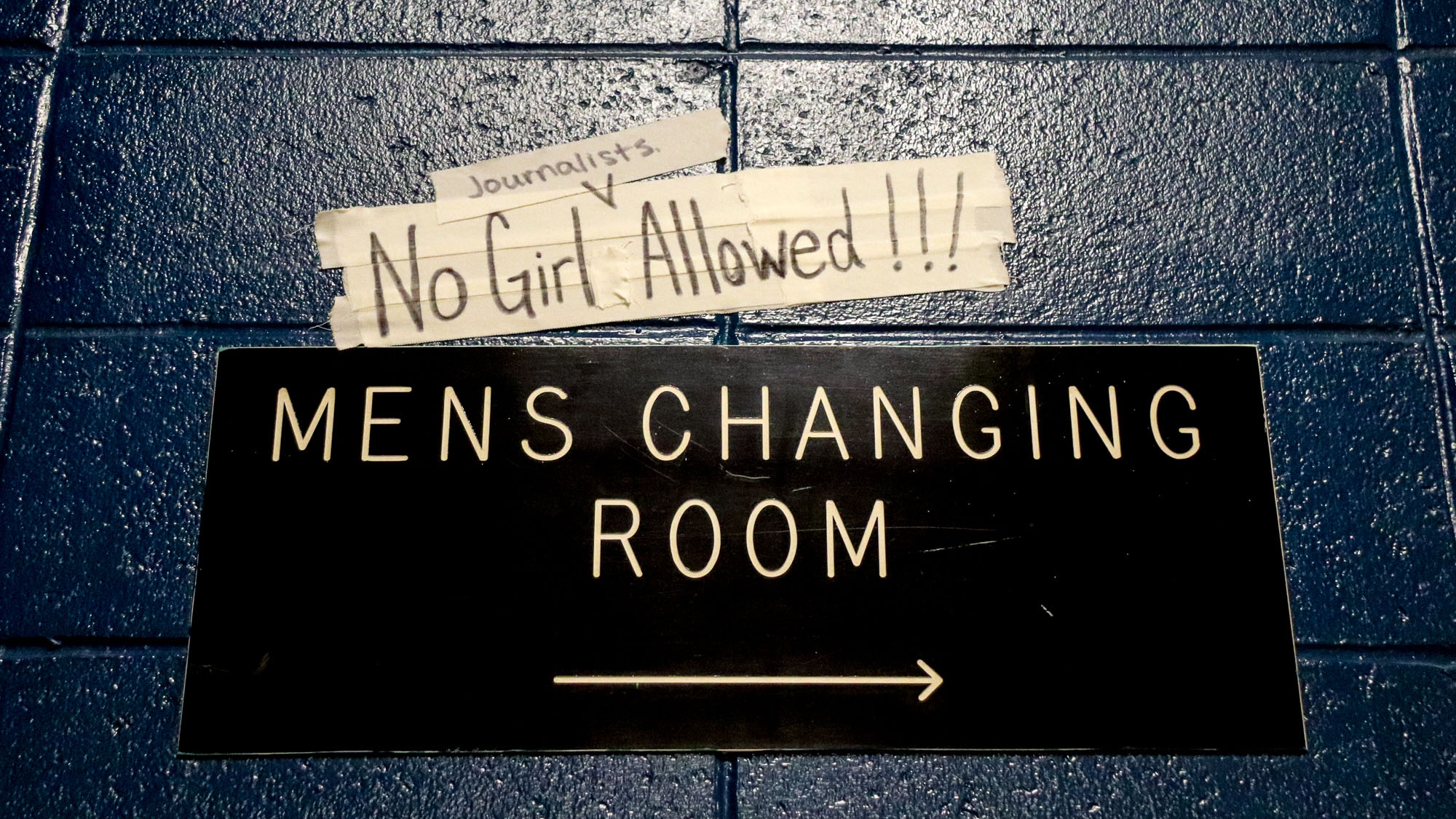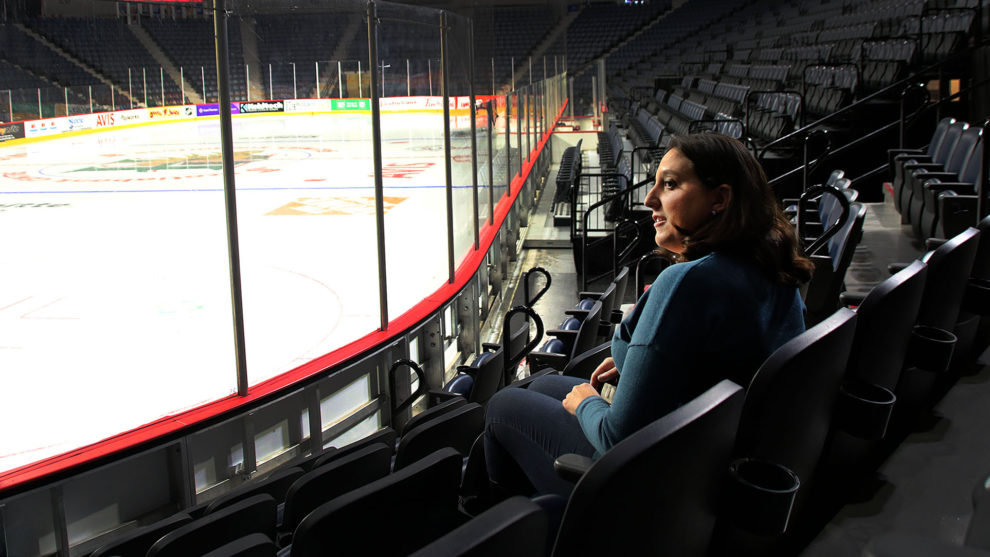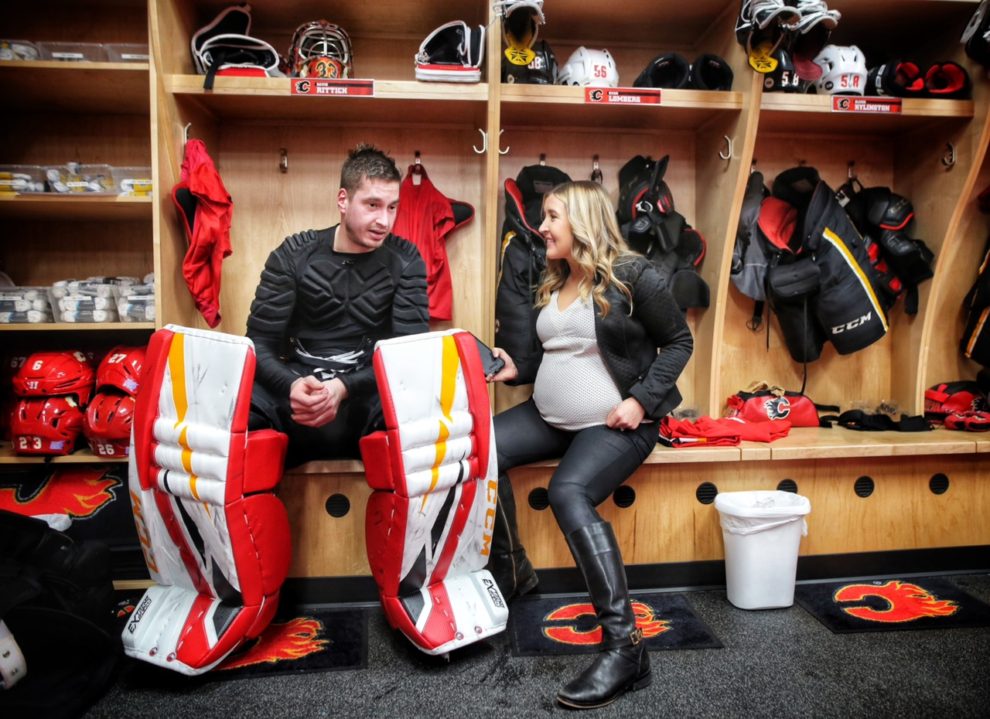In a league of their own

caption
How women in sports media are evening the score
“It feels like you’re making progress,” Kristen Lipscombe says. “Then it’s almost like you take two steps back to take one forward.”
Lipscombe was involved with sports media in Halifax for 13 years. She spent six years doing general reporting including sports coverage for Global TV Maritimes, the Chronicle-Herald and the Metro tabloid, before six years of communications for Hockey Canada and the Canadian Women’s Hockey League, and then two more years covering hockey for the Metro.
After that time she needed a break from the mental strain that came from regular comments on clothing, questions regarding her ability and the struggle to make herself heard in a sea of men’s locker room talk.
Watching from the sidelines, doing journalism or P.R., took some getting used too. She always pictured herself being on the ice. When young she imagined winning awards as a player. She dreamed of playing on the Olympic Women’s ice hockey team. Now she has a collection of championship rings and tokens from Sochi and Vancouver – as the media and communications coordinator for Hockey Canada and the communications director for the Canadian Women’s Hockey League.

caption
Lipscombe shows off the rings she won during various World Championships while working with Hockey Canada.She grew up playing sports, but as an adult was doubted by others. Colleagues and coaches questioned her sports knowledge and even her hockey knowledge, despite years on the other side of the glass.
“I felt like I needed to prove myself a little bit more than other people might have to,” says Lipscombe. “It’s those little things that add up over time that make you feel like you don’t necessarily belong in the sports world.”
She believes gender inequality is ingrained in sports everywhere, because sports tend to be male dominated. But Lipscombe doesn’t blame a person, demographic, or organization for that. “That’s just history, right?”
She says it’s something to fight against, not just as women, but as a society.
Now, Lipscombe works for the Nova Scotia Health Authority, but she still believes in her work in the sports world. When she first started reporting on sports, she was writing for the Cord, Wilfred Laurier University’s student newspaper, and had few women to look up to. She says that seeing other women succeed will lead to other women believing they can succeed. There are still barriers that need to be broken through. Throughout her career, she believes she may have contributed to breaking some. She didn’t make headlines as an athlete. She went one better by putting strong female athletes there instead.
“Even though I didn’t get there how I thought I was going to get there, life kind of turned itself around and I ended up finding my own way.”

caption
Kristen Lipscombe was an ice hockey reporter. She reminisces while sitting rink-side at the Halifax Scotiabank Centre, a place she still feels at home.Historically, women haven’t been treated as equal to their male counterparts. In the age of #MeToo there have been giant strides towards equality, but the sports world can be slow to change. How can women sports reporters work when always having to prove their knowledge? How can they prove that they deserve respect?
Life in a boy’s club
Women in sports journalism began in 1975 when Jane Gross unintentionally broke barriers by entering an NBA locker room, starting a discussion on locker room access for the media.
Two years later, Melissa Ludtke was denied locker room access by the New York Yankees.
Ludtke took action. She sued not only the Yankees, but city athletic officials and the then-commissioner of baseball. The judge overseeing the case ruled that all reporters, regardless of sex, would have equal locker room access. She recommended “towels” as a solution to the privacy concerns raised by the team.
But locker room discrimination did not end here.
In 1984, San Diego Padres manager Dick Williams told American sportswriter Claire Smith that women were prohibited from the locker room. At the time, baseball’s National League allowed teams to make their own policies for locker room access.
The next day, Peter Ueberroth, the new baseball commissioner, ordered all locker rooms in baseball to open to women.
After all the changes to access rights for female sports journalists, Jane Antoniak didn’t expect to face the same old attitudes as the full-time sports reporter for CBC Radio in Montreal. “I was very young,” says Antoniak, “and wasn’t aware that maybe I was being discriminated against.”
On May 12, 1987, the Atlanta Braves banned her from entering the locker room. The team ignored the commissioner’s order from three years earlier, after Atlanta Braves team member Dale Murphy, said it was against his religious beliefs to allow women in the locker room.
The Montreal Gazette reported that the CBC sent “a letter of protest” to Ueberroth, hoping to correct the situation for Major League Baseball on both sides of the border.
Locker room bans were not the only obstacle Antoniak faced as a sports reporter. She had been mistaken for the press box waitress by the men in the room. She also was told she had only been hired only to promote gender diversity in sports.
“I know what it feels like to have been a token. And I get that we had to start somewhere, and I was one of those early people that helped get it going,” says Antoniak. “It’s tough being a token, because you don’t necessarily have the support around you.”
Down but not out
Canada and the United States are still lacking when it comes to women in sports media.
The 2018 Associated Press Sports Editors Racial and Gender Report Card looked at more than 75 newspapers and online media sources. Of the 1,378 people employed, only 246 were women.
When looking at hiring based on gender, fewer than 18 per cent of employees were women.
ESPN leads in gender hiring compared to any other group. When looking at the 141 women working as sports editors, assistant editors and columnists, 81 per cent work for ESPN.
The past four years saw a slight increase in women working behind the scenes in sports as copy editors, assistant sports editors and columnists. On the other hand, there are now fewer sports reporters.
“Gender-bland sexism” – a term created by University of Southern California sociology and gender professor, Michael Messner – can help explain these numbers.
Messner found that female athletes and reporters get ‘bland’ representation online and in broadcast. This makes female reporters come across as less knowledgeable and the sports less exciting in comparison to male reporters or men’s sports. By doing this, sexism is less apparent in the media as both are still getting covered.
“When they are covered, the coverage is not as overtly sexist as it was 20 years ago,” says Messner, “but it’s often covered in a drab and boring way.”
While there have been slight improvements, sexism is still running rampant in the sports world. Messner says gender hierarchies in sports media pose a threat to the future of women in the field.
“This is a legacy of a continuing sexist history, equating athleticism and sports knowledge with dominant conceptions of masculinity and men’s public power,” says Messner. “Women have certainly challenged this in recent decades, but in many ways it’s still alive and well.”

caption
Kristen Anderson spent nine months reporting on the Calgary Flames while pregnant, proving that being a woman, mother and journalist is possible.
Do not enter
“It’s funny to hear a female talk about routes.” This sentence was uttered by Cam Newton, the Carolina Panther quarterback, during a post-game press conference in 2017.
Sexist comments and attitudes towards women in sports media are still prevalent online, in the locker room and in the press box.
Kristen Anderson encountered her fair share of these remarks in almost 14 years working as a Calgary Flames reporter for the Calgary Sun. Three of those years she was the only one on the beat. She says, “the men, professional athletes weren’t used to seeing female sports reporters and talking to them like they were equals.”
Anderson has been blocked from entering locker rooms, talked down to by head coaches, and had to prove her knowledge to a room filled with her peers.
This led to her doubting her ability. Despite her success, she felt like a fraud. And for the first three years of her career, she constantly felt she didn’t deserve to be there because she was a woman. That she wasn’t working hard enough. That she didn’t belong.
Anderson doesn’t need a full hand to count the number of women she regularly encounters reporting on hockey. Cassie Campbell. Donna Spencer. Alanna Nolan. That’s it.
She now has confidence in her work but remains outnumbered by crowds of men swarming in the hallways outside the dressing rooms.
Anderson has almost missed deadlines because she was prevented from entering the locker room to get quotes. “Three of my male colleagues heading in before me didn’t have their passes, and I didn’t have my pass visibly showing either,” says Anderson. “The security guard stopped me.”
Sexism doesn’t just exist in day-to-day interactions. With the birth of the internet came online attacks.
After posting a tweet accusing a hockey player of diving, a commenter told Anderson to kill herself. She says fans emailed her, as did her family and her bosses. She was told she should be stoned and burned. All because of a tweet.
“The sexism that exists in professional sports media is still prevalent,” says Anderson. “It’s still really hard for women to ignore it… get past that, and prove themselves.”
About the author
Ellery Platts
Ellery is a fourth year student in the BJH program at King's. She is extremely passionate about sports and photography.

M
Marcus A.
R
Rachel